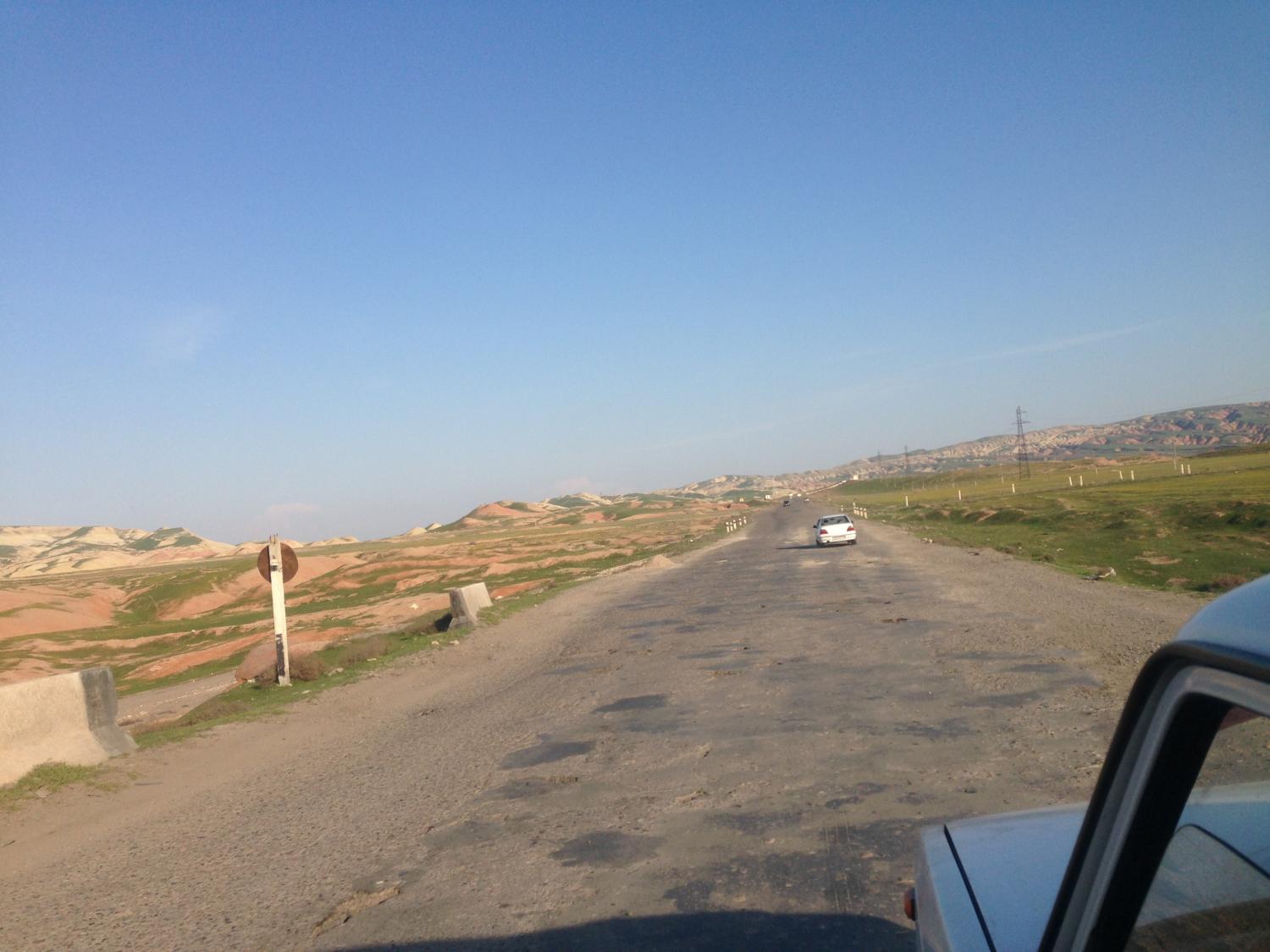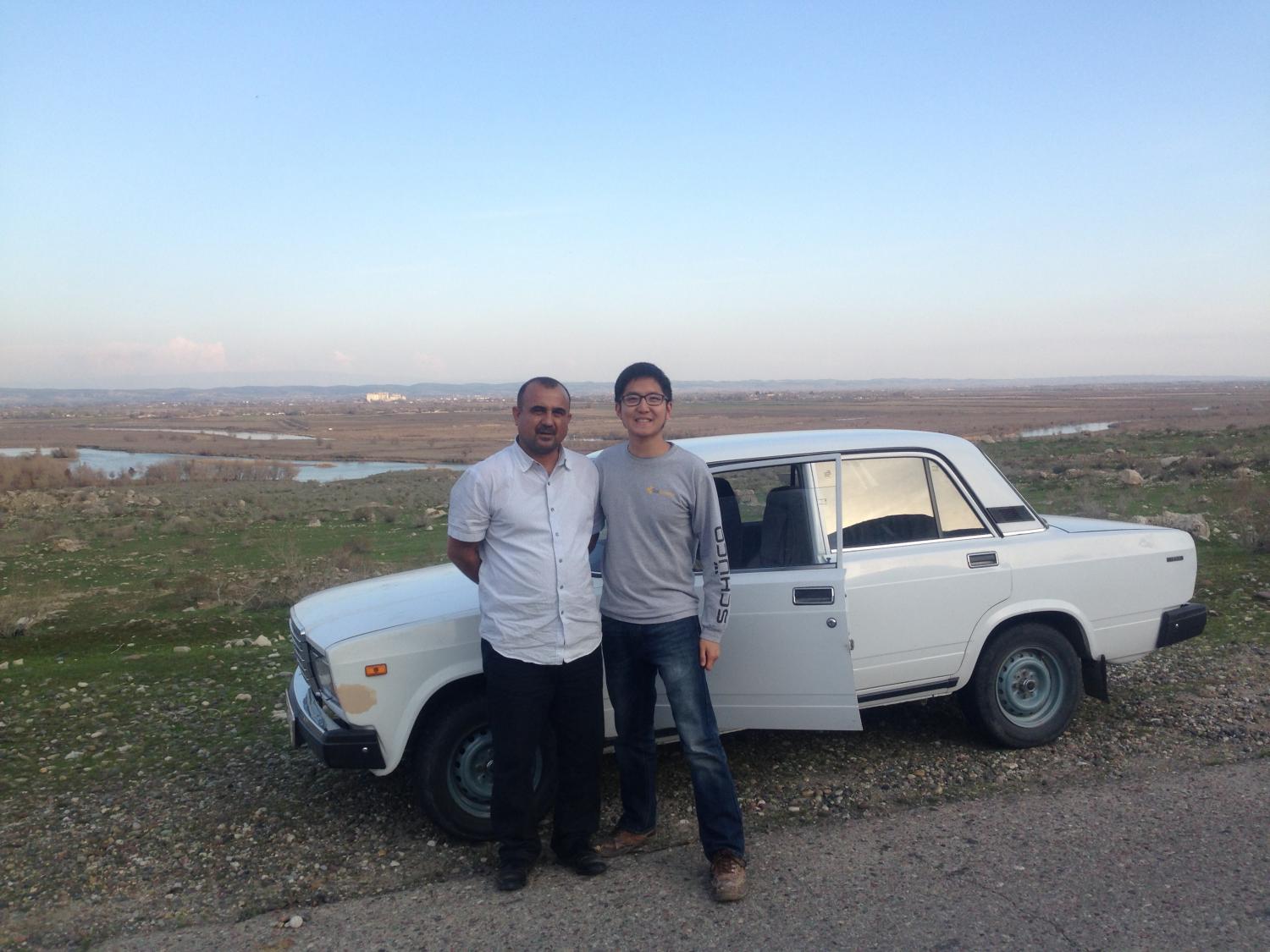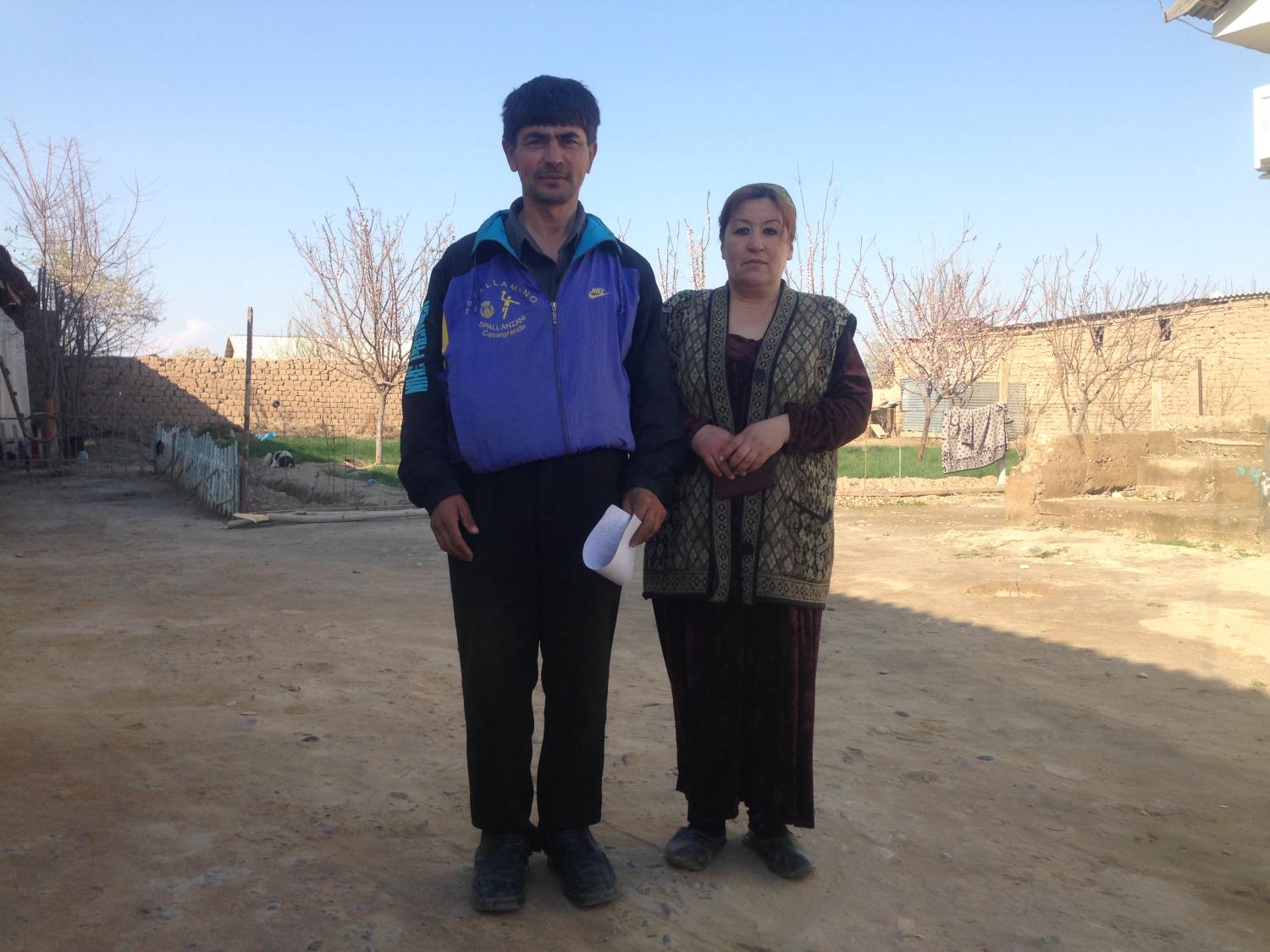
I am sitting in a Lada 1500, zooming down a pothole-filled tarmac road in the middle of nowhere, Tajikistan. This is a 2004 Russian-made car, which at its time of production had a few enhancements that included a clock and improved sound-proofing. What it lacked were airbags, seat belts and doors that did not feel like they could fall off anytime. We were going 90 miles an hour, swerving around potholes, in a decade-old Russian car that we would probably not want the insurance company to know about. This is also known as the process of borrower-verification, where we head out into the field to confirm that loans went out to the right people, for the right purpose, with aligned records in place. This is where we become Kiva’s eyes and ears on the ground.
Zhafar was to be the sole driver for our journey today to look for one of HUMO's borrowers in the town of Pyanj. Bright and early at 630am Zhafar said in broken English, “you ready? We go Afghanistan!”. At that moment, I realized how far we had to travel – about 250 miles south through all sorts of terrain towards Pyanj, which sits at the Tajikistan-Afghanistan border.
Tajikistan is one of the smallest countries in Central Asia, but what it lacks for in size, it compensates with height - 93% of this country is made up of mountains. Mountains introduce a particular set of complications to Tajikistan – the difficulty of building infrastructure to connect towns that sit in the valleys between the highlands. Thankfully, the Soviet era brought significant development in terms of roads, but the lack of and difficulty of maintenance on the mountains resulted in potholes twice the size of an XXL pizza scattered all across the tarmac. Free back massage, anyone?
 Potholes larger than XXL pizzas
Potholes larger than XXL pizzasFurthermore, while “roads” are available, signs and directions are a rare sight. For about 500 miles of driving today, I think I saw maybe two.
I eventually learnt that Tajikistan has her own version of Google Maps – any person you meet on the road. Zhafar remarked, “In Tajikistan, Tajik people is GPS!” Each time we met a fork in the path, Zhafar would ask the nearest person for directions, and no we did not stop the car. He would basically roll-up to the next car/bicycle/truck/donkey, sound his horn, wind down the window, ask for directions and then be on his way. In nine out of ten occasions, we were given the right directions easily, with the exception for one person who ignored us, leaving Zhafar to comment, “GPS… bad connection!”
 Zhafar and our Lada
Zhafar and our LadaIn a nutshell, we were travelling in a car that could barely pass a state safety inspection check, through mountainous terrain with no directions, on roads which provided countless hours of free back massages, plus incessant swerving which made the journey feel more like I was on a boat travelling through a storm. Except, I was in landlocked Tajikistan.
Hours later, after multiple changes in altitude, we finally arrived in Pyanj. In the distance, we could see Afghanistan. When we got to the borrower’s place, I was glad to learn that through her $2000 Kiva loan, Ozoda managed to purchase more household goods in bulk and at lower costs, which she was able to sell and make a profit on at the local market. With the help of credit support from Kiva, she now owns two shops at the market, and was recently able to afford the construction of a small extension at her home. When Ozoda saw the profiles of all the Kiva lenders that funded her loan, she repeatedly expressed her heartfelt gratitude to the Kiva community. Right there, I was reminded that the trip was well worth all the bone-shaking, as we said our goodbyes and rode off into the sunset back towards Dushanbe.
 Ozoda and her husband!
Ozoda and her husband!Support borrowers like Ozoda in rural Tajikistan here!
PREVIOUS ARTICLE
Inside a Zimbabwean rural home →NEXT ARTICLE
International Women's Day the Zimbabwean Way →













